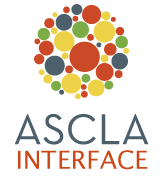By Diana Reese, ASCLA president and coordinator, institutional library development, Colorado State Library
Hiking the Colorado Trail one weekend, I met a lone hiker using a long cane. I was momentarily stunned to see a blind person on the trail. I couldn’t resist asking him how he managed to stay on the trail and avoid tripping. I have two good eyes and I can’t manage to consistently accomplish both of these on a good day! He explained that, of course, his cane guided him over and around the roots and rocks, but as for staying on the trail, he had a GPS with speech-to-text capabilities that alerted him when he strayed. I never thought of a GPS as an assistive technology before! It is wonderful that developing technologies increasingly provide individuals of all abilities with experiences they might not otherwise have, whether on the trail or in a library. The important work of ASCLA’s members provides librarians with information to understand and manage these developing technologies and other access issues so that all individuals have richer library experiences.
This issue of Interface highlights library services, programs and activities that serve special populations, one of whom is that blind hiker. These populations include people of all ages who are underserved by libraries, such as those who are homeless, incarcerated, or reside in health care facilities or other institutions; those who have vision, hearing, mobility and developmental differences; and those who have a cognitive, mental or emotional illness.
ASCLA members are leaders in serving these populations, and the association’s activities reflect this leadership. Most recently, the Library Services to Prisoners Forum led an effort to write and obtain adoption of the Prisoner’s Right to Read interpretation of the Library Bill of Rights, which you will read about in this issue. Currently, ASCLA is leading a team to revise the Standards and Guidelines of Service for the Library of Congress Network of Libraries for the Blind and Physically Handicapped, last revised in 2006. These standards address services provided by the National Library Service for the Blind and Physically Handicapped (NLS) and its network of cooperating libraries. There is also a committee working on developing Guidelines for Library and Information Services for the American Deaf Community. And I would be remiss if I failed to mention two outstanding ASCLA toolkits: Library Accessibility: What you need to know, which helps librarians in all types of libraries understand and manage access issues, and Think Accessible Before You Buy, which guides librarians in the purchase of electronic resources.
The services, programs and activities showcased in this issue demonstrate that ASCLA members continue to make great strides toward ensuring universal access to all library services. We must ever be aware of the need for continued advocacy, knowledge sharing, and collaboration—both within ALA and our local communities—to make this goal a reality. After reading these stories, I hope you are inspired and moved to action so that libraries of all types are fully utilized and that learning communities are richer because people of all abilities participate. The impact on our clients and our institutions will be greater because of it.
